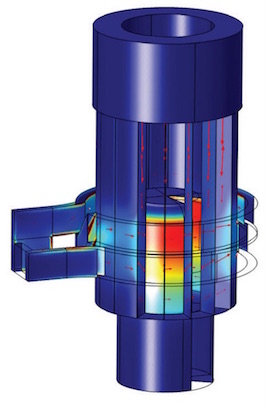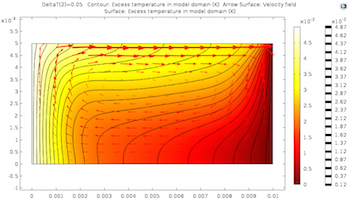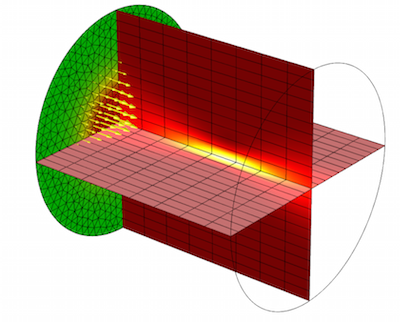Blog Posts Tagged Heat Transfer Module

The MTC Builds a Simulation App to Optimize 3D Printing
Engineers at the Manufacturing Technology Centre built a simulation app to efficiently analyze an additive manufacturing technique known as shaped metal deposition. Read the full story…

Improving Phase Change Energy Storage: A Natural Approach
A research team used thermal modeling to advance the performance of a phase change energy storage system — an effective and efficient approach to conserving thermal energy.

Optimizing the Production Process for Solar Energy Cells
EMIX used simulation to optimize their cold crucible continuous casting process, an integral aspect of photovoltaic solar cell production. Get the full story >>

Modeling Marangoni Convection with COMSOL Multiphysics
When a surface gradient is temperature dependent, the Marangoni effect is called Marangoni convection. Learn how to analyze Marangoni convection in COMSOL Multiphysics®.

Modeling Laser-Material Interactions in COMSOL Multiphysics
When it comes to modeling laser-material interactions and heating, different modeling techniques are appropriate for different problems. We go over a few examples here >>

Protecting Aircraft Composites from Lightning Strike Damage
Some aircraft have a protective coating to mitigate damage from lightning strikes. Boeing used multiphysics simulation to evaluate thermal stress and displacement in this layer.

App: Studying a Concentric Tube Heat Exchanger’s Dimensions
The Concentric Tube Heat Exchanger Dimensioning Tool demo app is an example of what is possible when you build a simplified version of a model and share it throughout your organization.

Optimizing Heat Sink Designs with a Simulation App
The Heat Sink with Fins demo app is here to get you started with designing your own heat sink design app. Take a look at the design scenario, app, and underlying model here.
